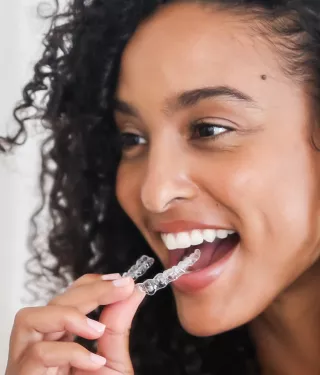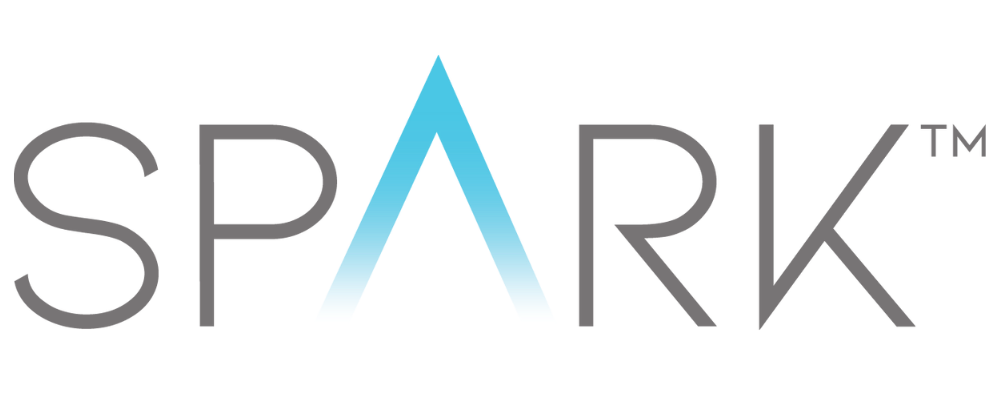Deep Bite Or
The “Hidden”
Teeth

After having treated more than 1500 patients with clear aligners of which some 300 are ongoing with Spark, I am always focused on satisfying requests and concerns patients have regarding their aesthetic needs while at the same time underlining the functional aspect of aligning teeth and the need to understand what a “mouth rehabilitation” means.
And yet, most patients still come to my office asking to correct “crooked teeth” and most specifically the four front upper teeth.
This “window display” is their biggest concern simply because it’s the most visible part of their smile. But what they need to understand is that to achieve a gorgeous smile sometimes the doctors need to go “in” the shop to fix other malocclusions beyond this “display.”
Deep bites are one of these problems that we need to address and explain to our patients so that they understand the risks and advantages behind their correction.
So, What Are Deep Bites?
A Deep bite means that there is an excessive overlapping of the lower incisors by the upper incisors. In other words, the upper teeth “hide” the lower ones. This might be caused by:
- A lower jaw that is shorter than the upper jaw thus leading the upper incisors to move downward and backward to catch up with the lower incisors.
- The lower teeth moving backward and upward, giving a “mountain shape” lower dental arch where the front teeth rise up much higher than the back teeth.
- Strong biting muscles that deepen the bite in patients who often grind their teeth.
Although it may appear as merely an aesthetic issue, a deep bite is in fact a far more serious malocclusion that can lead to significant consequences on teeth and gums as well as on the temporomandibular joint (TMJ).
Some consequences from deep bite would include:
- Lower tooth wear that compromises tooth structure and height along with dental sensitivity.
- Painful sores or ulcers from having the lower incisors biting into the gum tissue in the roof of the mouth.
- Gum recession on the lower incisors induced by the traumatic biting of the upper incisors over the lower gum.
- TMJ disorders due to the compression and backward position of the articulation caused by the inclined front teeth position.
- Difficulty chewing that ends up painful and inefficient.
How Do You Correct Deep Bites?
Orthodontists need to reduce this excessive coverage by one or a combination of these movements:
- Pushing the upper teeth upward or “intrusion” (particularly when a gummy smile is present)
- Pushing the lower teeth downward
- Pushing the premolars upwards or “extrusion”
This process is routinely done by orthodontists using fixed appliances like braces by first pushing the upper incisors upward and forward, exposing sufficient tooth surface on the lower incisors to allow the orthodontist to second bond braces on the lower teeth and going onward with the treatment pushing them downward.
To bypass this two-step option, some bond bite ramps (build-ups) to disocclude arches allowing the lower bonding of braces, but that may prove uncomfortable for patients and create chewing and speech discomfort.
This approach with braces is effective but unfortunately, time-consuming, and here is where the big advantage aligners have over fixed appliances.
In fact, with aligners, and specifically Spark aligners, we can start correcting the overbite on both arches from the beginning rather than wait months to bond the lower arch.
The disocclusion caused by the thickness of aligners avoids the potential occlusal interferences of fixed appliances. Thus, utilizing aligners allows teeth on both arches to align simultaneously, reducing treatment time and patient discomfort.
Moreover, Spark aligners come with additional advantages inherent in the specific mechanical properties of its plastic called TruGEN. This material has higher sustained force retention which can lead to a more effective and efficient treatment for patients. It also is clearer, stains less, and is proven to be more comfortable than the leading aligner brand* which has lead to 100% patient satisfaction from surveyed patients*.
So, if you bite on your back teeth and your front lower teeth are barely visible, if this position is uncomfortable or painful this might mean you may have a deep bite that should be corrected by a skilled orthodontist using Spark aligners. Thanks to Spark’s high aesthetic qualities and the mechanical properties inherent in the TruGEN plastic you will not only get this long-desired smile but improve the functionality of the occlusion, thus help to keep healthier teeth.



